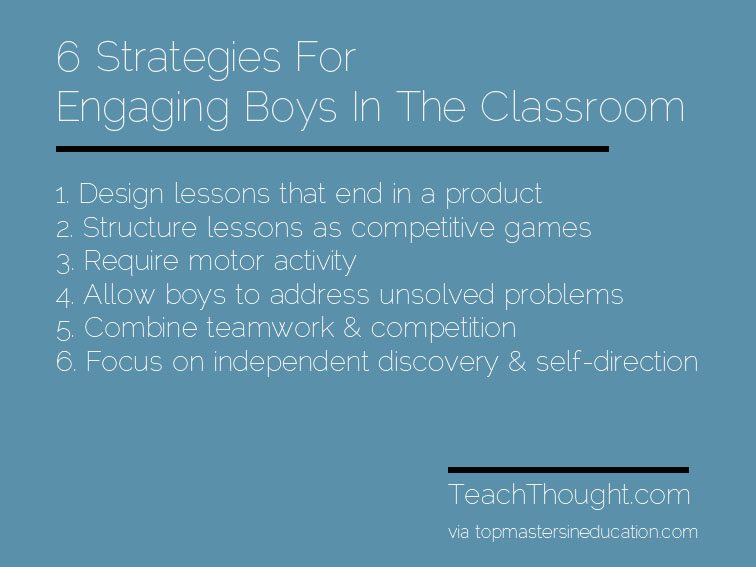6 Strategies For Engaging Boys In The Classroom
Engaging male students is a matter of concern for many educators, judging by professional development books and conference sessions we see, as well as conversations with other teachers.
Historically, boys have been out-performed in the K-12 classroom by girls, though they have performed somewhat evenly on national standardized tests such as the ACT and SAT. The data shows that boys score a bit higher in science and math, while girls do better in language and composition. But pure testing environments–regardless of their own inherent flaws–are different than classrooms, where “performance” is dictated as much by attendance and compliance as it is genuine understanding of content.
Which made the following infographic interesting. It starts out basic enough, with a visual representation of birth rates and kindergarten enrollment, but quickly offers up the first “!”–almost twice as many male students as female students repeat kindergarten, and approaching triple the number of male students diagnosed with a learning disability compared to female students.
In fact, in some further digging, we found a study that suggests the ratio of female to male diagnoses of learning disabilities to be as high as 6:1 (Finucci and Childs 1981). The fact that the gap isn’t larger in terms of ‘academic performance’ is staggering in and of itself.
This is the part where there are usually some over-general and superficial ‘strategies’ offered. Stuff ‘boys like’–video games, sports, etc. But this graphic offers strategies that actually closely align with our experience in the classroom, focusing on competition, self-direction, and hands-on, product-based learning.
While it leaves out closer scrutiny of how learning can truly be personalized, for the average teacher looking for some easy-to-understand-and-implement strategies, this is an excellent start.

Image attribution topmastersineducation.com; 6 Strategies For Engaging Boys In The Classroom
